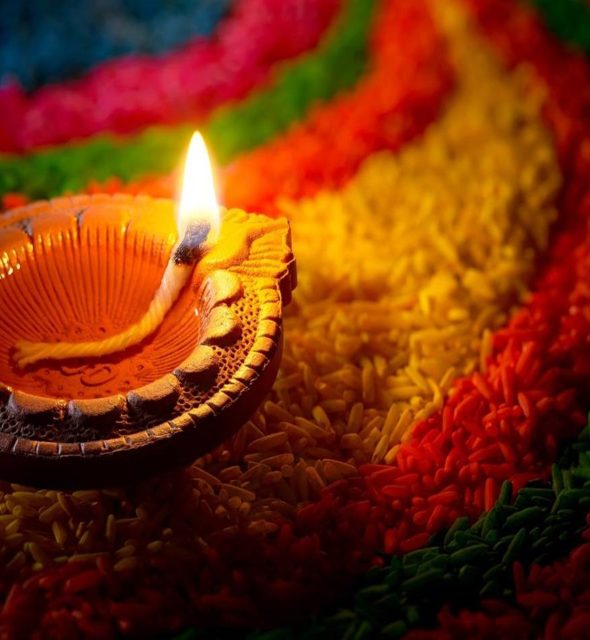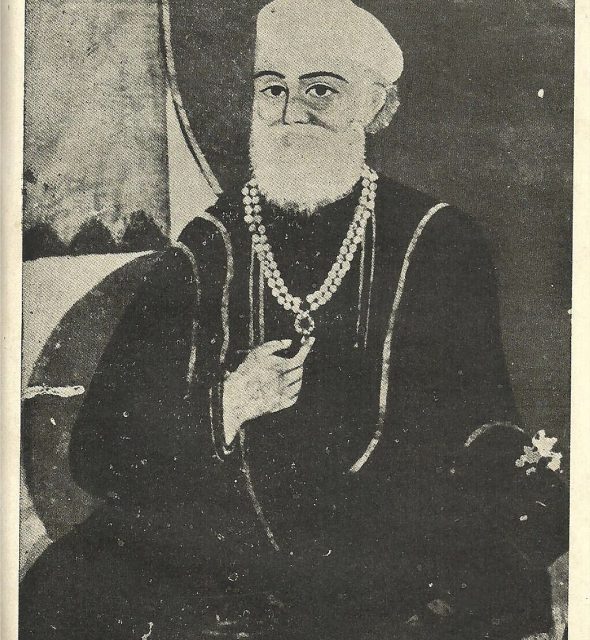
DIVALI, festival of lights (from Sanskrit dipamala or dipavali meaning row of lamps or nocturnal illumination), is observed all over India on amavasya, the last day of the dark half of the lunar month of Kartika (October-November). Like other seasonal festivals, Divali has been celebrated since time immemorial. In its earliest form, it was regarded as a means to ward off, expel or appease the malignant spirits of darkness and ill luck. The festival is usually linked with the return to Ayodhya of Lord Rama at the end of his fourteen year exile. For the Hindus it is also an occasion for the worship of Laksmi, the goddess of good fortune, beauty and wealth.
DIVAN SINGH MAFTOON (1890-1974) was in his day the most talked about editor in Urdu journalism. Born in the Punjab he migrated to Delhi in the early twenties. His sole asset was a smattering of Urdu. Gradually, he grew in his command of the language and became known for his mastery of Urdu prose acclaimed for its lucidity and exactness. Through his felicity in Urdu prose, he naturalized himself in the milieu of Ghalib`s Delhi. He achieved to a considerable degree its style and refinement. In his conversation, in his dress and in his tastes, he became a sovereign Delhiite. He had a natural genius in personal relationships.
DIVAN SINGH, BHAI (1888-1921), one of the Nankana Sahib martyrs, was born in 1888, the son of Bhai Hira Singh and Mat Pan Kaur of Pandori Nij[jaran, in Jalandhar district. The family later shifted to Chakk No. 91 Dhannuana, in the newly colonized district of Lyallpur, now in Pakistan. Divan Singh, an illiterate bachelor, made a name for himself in that area as a wrestler and as an intrepid fighter.
DIVAN SINGH, BHAI (d. 1924), one of the martyrs of Jaito Morcha, was born around 1874, the son of Sahib Singh of the village of Mahingarval in Hoshiarpur district of the Punjab. As he grew up, he joined government service in the railways and was an assistant engineer when he resigned in protest against the deposition by the British of Maharaja Ripudaman Singh, ruler of the princely state of Nabha, in July 1923, and became an activist in the Akali movement for the reformation of the management of Sikh shrines.
ANANTNAG (33° 44`N, 75° 13`E), a district town on the southern edge of the Kashmir valley, is named after a nearby spring which is regarded as sacred by the Hindus. The town claims a historical Sikh shrine commemorating the visit of Guru Nanak (1469-1539), who passed through here on his way to Mattan in 1517. The present building of Gurdwara Guru Nanak in the southern part of the town was constructed in 1950, and a second storey was added to it in 1970.
BAZIDPUR, village 7 km southeast of Firozpur Cantonment (31° 55`N, 74° 36`E) along the FirozpurLudhiana highway, is sacred to Guru Gobind Singh (1666-1708), who passed through here in 1706 after the battle of Muktsar. Gurdwara Gurusar, formerly known as Tittarsar after a legendary partridge (tittar, in Punjabi), marks the site where Guru Gobind Singh had encamped, and was first constructed in the form of a small Manji Sahib by Bishan Singh Ahluvalia, an official under Maharaja Ranjit Singh (1780-1839).
- 1
- 2




